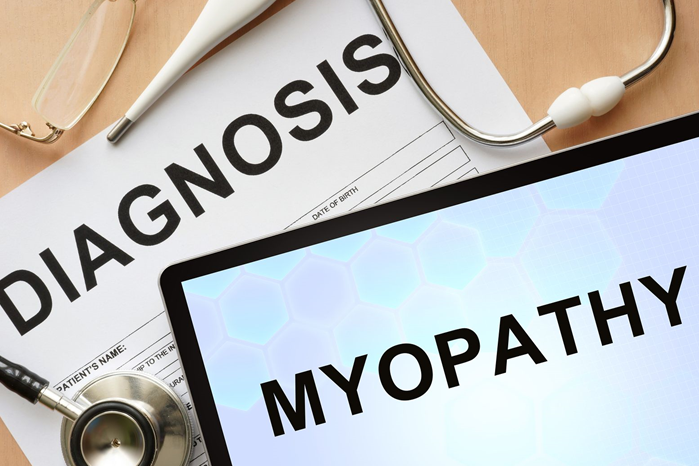Acute steroid myopathy is a rare complication of steroid therapy. It may take weeks or months to recover from. More often, however, it is chronic, with symptoms extending to all body parts. Acute early-onset phenotypes occur in patients who do not require mechanical ventilation. Moderate steroidal dosages are responsible for this condition, as are unusual muscle involvement and abnormal vascularity.

Symptoms of myopathy
Steroid myopathy can occur in two forms: chronic and acute. Chronic myopathy develops slowly and gradually. The patient can show signs of weakness over months or years. Electromyographic changes and myalgia are common signs. Both types of steroid myopathy are painful, although the latter tends to be more severe. In both forms, muscle weakness mainly involves proximal muscles in the lower limbs, rather than the distal ones. Palpation of the muscles revealed early recruitment of the upper extremities, especially in patients who were not ventilated.
Symptoms of steroid myopathy can be symptomatic or chronic. Acute myopathy is characterized by rapid progressive weakness, whereas chronic myopathy takes months or years to develop. The severity of the muscle weakness depends on the severity of the disease. Acute myopathy tends to be painful and progresses slowly. Usually, a steroid-induced myopathy is painful, and recovery can take three to four weeks. The condition may be irreversible, but it is important to follow up in the event that the muscle weakness persists.
Treatment for steroid-induced myopathy generally involves lowering the steroid dose to its lowest effective level and switching the steroid regimen to alternate days. Alternatively, a nonfluorinated glucocorticoid is often recommended. The recovery time for a patient affected by steroid myopathy can vary significantly, and may take months. In addition, patients may experience reduced muscle strength and weakness in the neck flexors, which is typical of inflammatory myopathies.
A patient diagnosed with aggressive lymphoma was treated with 60 mg/d of prednisone 5 days a month. She experienced decreased strength and weight loss after her first course of the treatment. In addition, her condition was associated with an increased risk of relapse. As with any steroid-induced myopathy, the most effective treatment is to decrease the drug dose. In most cases, a patient with steroid-induced myopathy will need to be monitored closely for several weeks or months to fully recover.
The symptoms of steroid myopathy vary between patients. In most cases, the muscle pain is severe in the legs, while the arms are less affected. The pain is often mild and occurs only in one or two cases. In cases of steroid myopathy, the muscle strength in the upper and lower limbs may be decreased significantly. Even moderate doses of glucocorticoids used in an ambulatory setting may not be sufficient to cure inflammatory myopathy.
In patients with steroid myopathy, the condition can cause weakness and pain. The symptoms of steroid myopathy depend on the individual patient’s diagnosis. Most patients will exhibit mild to moderate muscle weakness, but some will be more severe. In some cases, the disease may involve the musculature, heart, and respiratory system. If this is the case, the condition may affect other organs. This can result in a weakened or weak skeleton and joint.

In patients with steroid myopathy, the symptoms may include a rash and a fever. The rash can be diffuse or localized. The most common muscle affected by steroid myopathy is the anterior tibialis. The anterior tibialis muscle is the most commonly affected muscle. The sarcolemma is the most likely source of the sarcolemma, which is located in the pelvic girdle.
Symptoms of steroid myopathy include decreased strength, fatigue, and decreased strength. A clinical diagnosis of steroid myopathy should be based on the severity of the symptoms and the type of the underlying disease. The symptomatology of steroid myopathy should be investigated in patients with the condition that use steroidal drugs. The presence of this condition in an affected individual should be detected by a physician or a health care provider.
Clinical symptoms
The clinical symptoms of steroid myopathy are similar in both male and female patients. In male patients, the disease is more severe and characterized by a decrease in respiratory function. The symptoms include a swollen abdomen and abdominal pain. The affected muscles may also be inflamed and have a high risk of infection. In women, asymptomatic steroid myopathy is usually present in women who have a history of gynecological disorders.